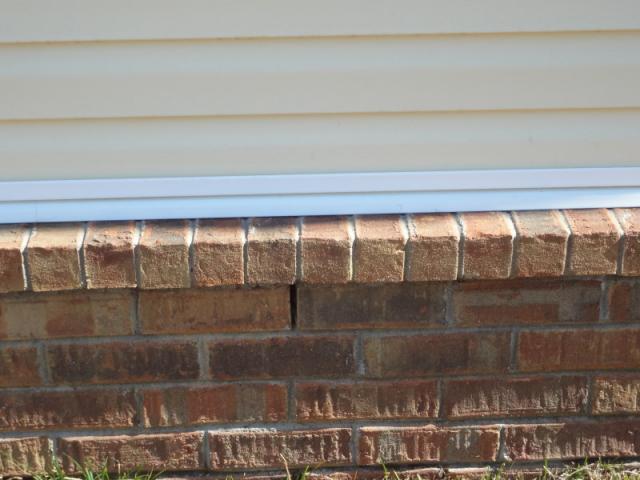- Home - Blue Palmetto Home Inspection of Summerville and Charleston
- Learn About Us and This Charleston Home Inspector
- What's Inspected
- Charleston Lowcountry Inspection Areas (geographic)
- Testimonials
- >>>Blogs (educational)
- Sample Reports & Documents
- Why Get a Home Inspection Report
- Charleston's Top Ten Reasons
- Home Inspector Photo Galleries
- Pricing
- Scheduling and Customer Information
- Home Inspection Authorization Contract
- General Scope of Work (electronic)
- Home Inspection Customer Satisfaction Survey
- Privacy Policy
- Full site
- The Roof Framers Field Manual
Don't weep for me!
Can you spot the defect in this photo of a recently built home in Charleston...... the weep hole is at the top under the rowlock. A weep hole is a little gap left between the bricks at the lower courses about 33" apart to help drain moisture from between the wall. Moisture entrapment can cause obvious moisture related problems. I guess the mason on this job just didn't understand the concept.... bless his heart. This kind of problem may not be obvious to someone without construction experience. Even municipal code inspectors may not be looking for this kind of thing. Call Blue Palmetto Home Inspection for your peace of mind!
Weep holes at the wrong elevation my not sound like a big deal but I have personally seen the damage this can cause. In one instance the weep hole was wrongly installed above the finished floor and when it rained heavily a little bit of moisture would be directed toward the nice hardwood flooring inside causing a mystery brown stain. (Possibly the mortar inside the weep hole was slanted exacerbating this problem.) Weep holes are primarily designed to allow trapped moisture to weep out like when it rains heavily and the ground is saturated. In this way the area behind the brick will not hold moisture. It also allows a small amount of air circulation that facilitates a drying out process. They should be as low as possible but still above grade. They should also be installed immediately above the flashing where needed like above large openings.
references irc 2003 703.7.6, 703.2.1


